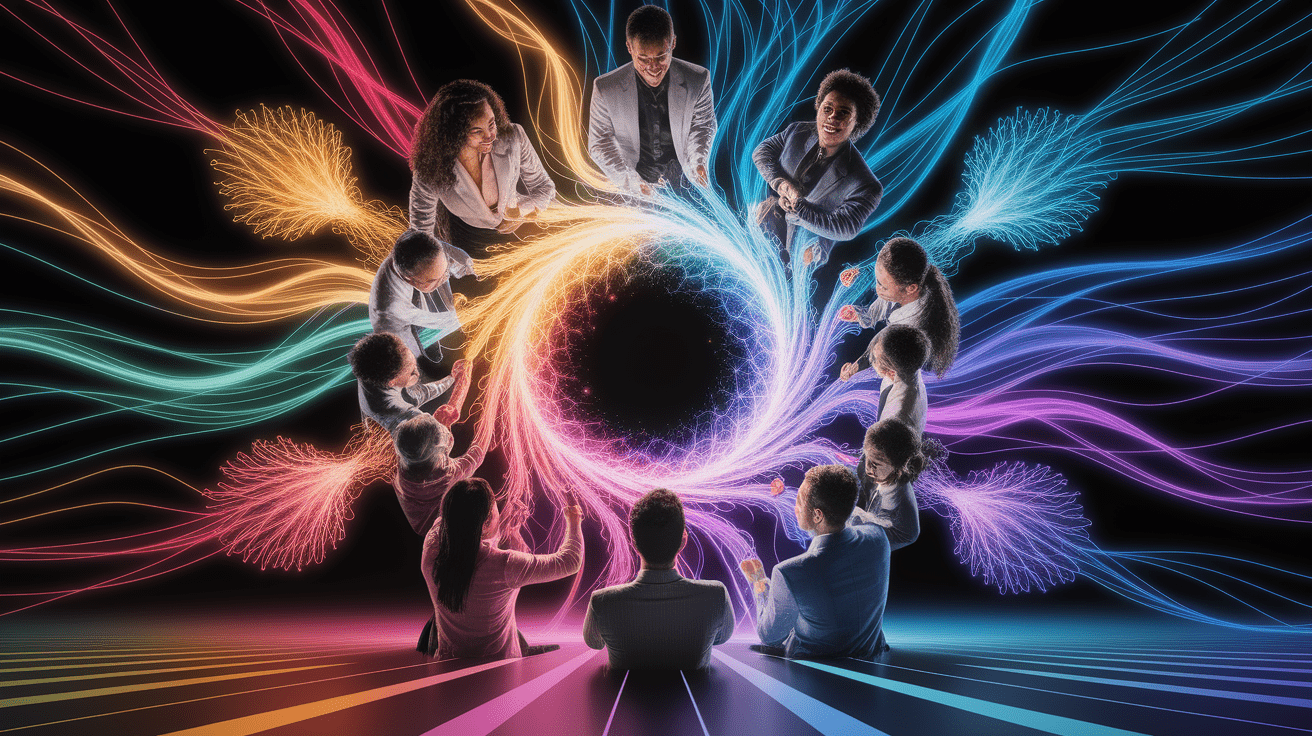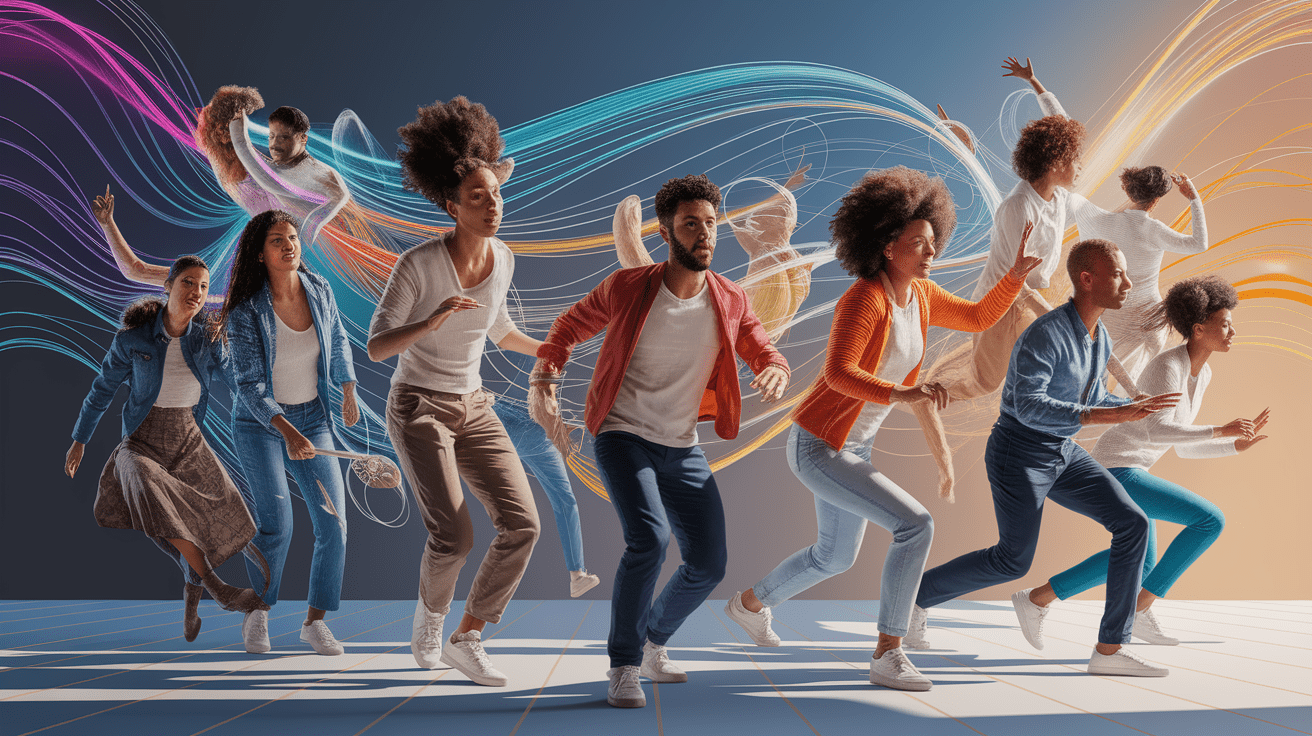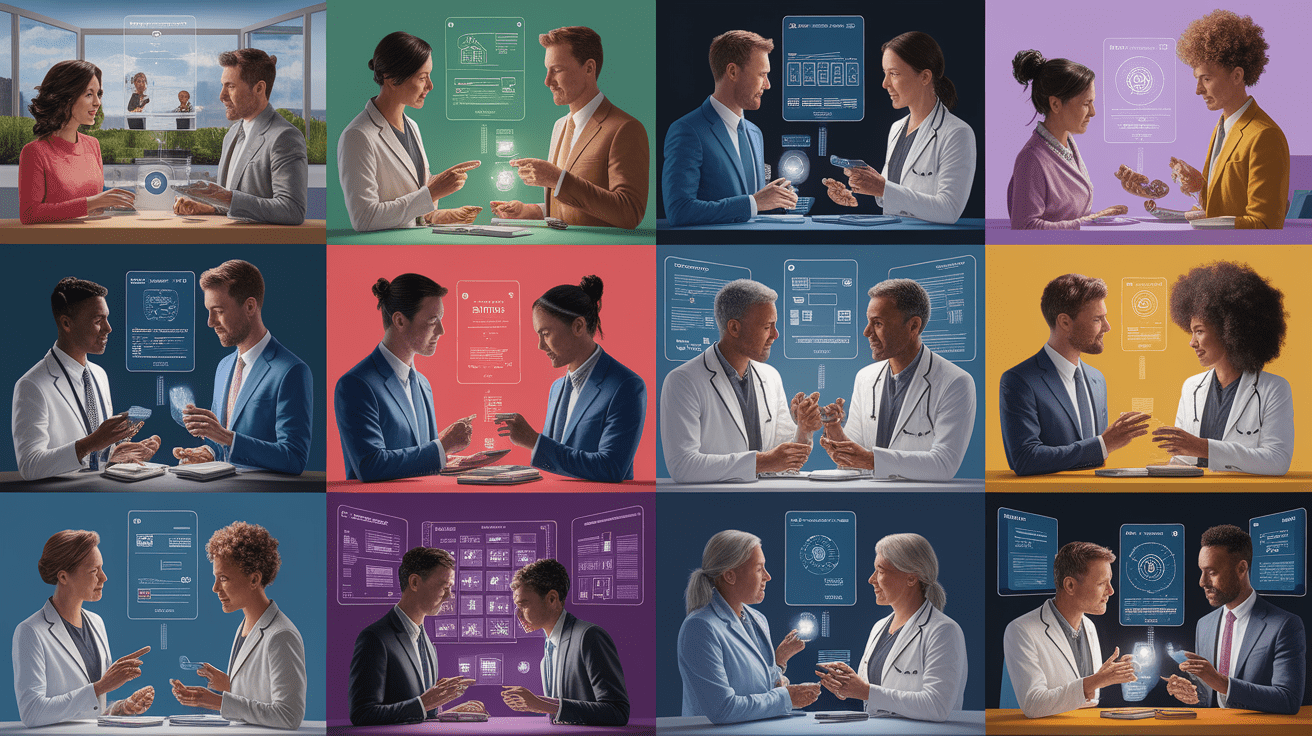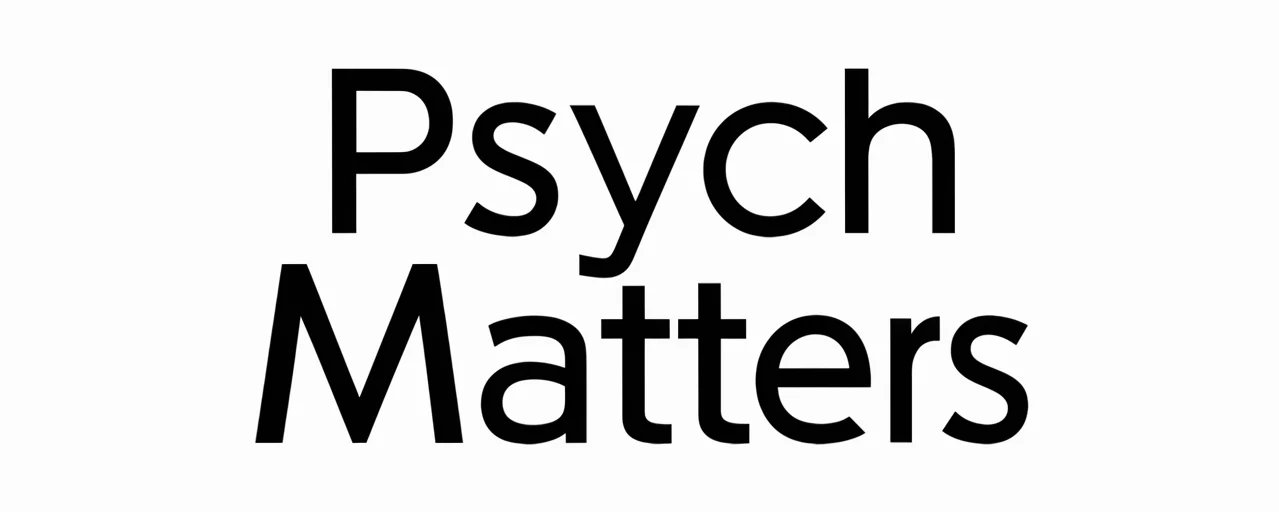Collective Flow & Synchrony Psychology: Harnessing Shared Peak Performance
Igniting the Collective Mind
In psychology, the concept of collective flow offers a compelling framework for understanding how groups can reach peak performance through shared consciousness and synchronized effort. Extending Mihaly Csikszentmihalyi’s flow theory from the individual to the group level, this phenomenon incorporates both cognitive and neural dimensions of synchrony psychology. When team members align their mental, emotional, and physiological states, they enter a group flow state characterized by seamless coordination, heightened creativity, and collective efficacy.

The scientific basis for this state lies in mechanisms such as brainwave synchrony and behavioral alignment. This alignment facilitates rapid, intuitive communication and co-creation, allowing the group’s output to exceed what individuals could achieve alone. Understanding how to ignite this collective mind is essential for leaders, educators, and facilitators aiming to maximize team cohesion and innovation.
Defining Collective Flow
Collective flow, often referred to as team flow or group flow, is a shared psychological state in which all members of a group are fully immersed, focused, and engaged in a common task. This extends the principles of individual flow to encompass interactive group dynamics and shared mental models. The key distinguishing feature of collective flow is the presence of collective synchrony—a simultaneous alignment in cognition, behavior, emotion, and physiology among team members.

According to research on group psychology and social coordination, this synchrony enables a form of shared consciousness. In this state, interpersonal coordination occurs effortlessly, decisions are made fluidly, and creativity is heightened. The synergistic effect means the group is not merely the sum of its parts but an integrated system capable of extraordinary performance.
Unpacking Synchrony Mechanisms
Achieving collective flow depends critically on underlying synchrony mechanisms at both neural and behavioral levels.

Neural Synchrony
Neural synchrony involves the alignment of brainwave patterns—particularly within the alpha and theta frequency ranges—that underpin focus, creativity, and flow. This phenomenon, discussed in detail by collective creativity research, transcends verbal communication. It enables groups to engage in intuitive, real-time collaboration where ideas and movements fuse without explicit discussion.
Behavioral and Social Synchrony
Beyond neural alignment, behavioral synchrony emerges as individuals unconsciously mirror each other’s postures, gestures, and rhythms. This social synchrony strengthens emotional bonds, trust, and empathy—foundations for effective group coordination. Synchronization in movement and affect generates a sense of group identity and rapport, fostering resilience and adaptability in complex environments. As a fundamental human drive to belong, these processes contribute to sustainable collective action and enhanced team performance.
Conditions for Achieving Group Flow
Group flow does not occur by chance; it results from intentional cultivation of interpersonal and structural conditions. Drawing from Group Flow Theory proposed by Sawyer, the following conditions are essential:

- Clear Group Goals: Defined objectives guide shared focus and motivation.
- Close Listening: Attentive, receptive communication strengthens shared mental models.
- Complete Concentration: Sustained attention minimizes distractions.
- Control Over Actions: Members feel agency and influence over group outcomes.
- Blending of Egos: Individual recognition yields to collective identity.
- Equal Participation: Balanced input prevents dominance by any single member.
- Familiarity: Pre-existing rapport supports smooth interaction.
- Continuous Communication: Real-time updates maintain alignment.
- Forward Momentum: Progress fosters motivation and engagement.
- Tolerance for Failure: Risk-taking is encouraged, facilitating innovation.
These factors collectively create the psychological and operational environment necessary to sustain group entrainment and high-performance synchrony.
Real-World Applications and Benefits
Understanding and applying collective flow concepts has direct benefits across multiple sectors:
Team Sports
In competitive environments, collective synchrony aligns athletes’ emotional and cognitive states, enhancing coordinated strategies, timing precision, and resilience under pressure.
Creative Industries
Artistic ensembles, design teams, and innovation labs rely on shared consciousness to merge creative inputs seamlessly, producing work that reflects a collective intelligence greater than individual contributions.

Sustainable Community Actions
Social synchrony supports coordinated engagement in environmental and social justice initiatives, strengthening collective behavioral change through empathy and group rapport.
Organizational Management
Research highlights that fostering group flow improves employee well-being, collaboration, and innovation. By enhancing collective efficacy, organizations can create cultures of sustained productivity and adaptive problem-solving.
Synchronizing Success: Next Steps
To harness the potential of collective flow and synchrony psychology, groups should implement deliberate strategies that promote alignment across cognitive, emotional, and behavioral dimensions. Leaders can:
- Invest in activities that promote rapport and interpersonal synchronization, such as guided workshops or joint physical tasks.
- Establish clear, shared goals and communication protocols for group projects.
- Encourage mindful awareness of group dynamics to identify and nurture moments of high synchrony.
- Provide environments that balance structure with creative freedom, enabling both forward momentum and adaptability.
With these steps, teams can transform from collections of individuals into integrated systems of shared peak performance. The cultivation of collective flow enriches both the process and outcomes of group endeavor, positioning teams to meet complex challenges with unified creativity and resilience.







